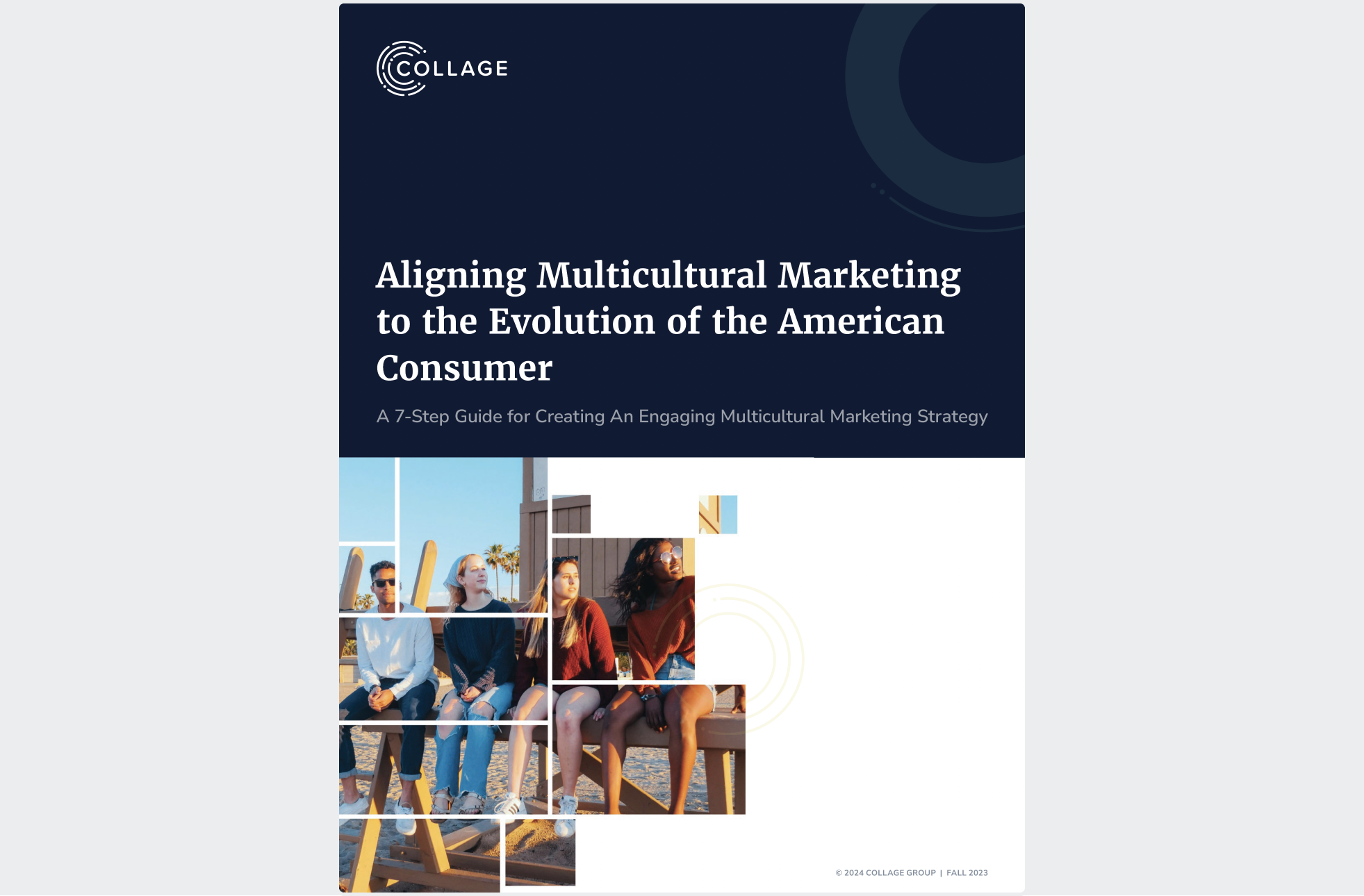In today’s era of increasing cultural diversity, consumer research professionals play a crucial role in unlocking the full potential of Multicultural marketing. They empower marketers to create impactful campaigns that resonate with diverse audiences and drive business growth.
In the U.S. Multicultural consumers make up 42% of the population, with a staggering 140 million individuals – a figure set to grow. In fact, the United States is set to become majority Multicultural by 2042 – and some states have already made that leap. As the U.S. consumer landscape evolves, there’s a need for brands and agencies to improve their understanding of culture – across race, ethnicity, generation, sexuality, family relationships, and more – to evolve their marketing strategies for authentic engagement.
With this in mind, Collage Group provides valuable insights into Multicultural marketing to help you understand its evolution and best practices. And by implementing these insights, your business can enjoy the benefits that come from doing so.
In our whitepaper, “Aligning Multicultural Marketing to the Evolution of the American Consumer,” we offer a 7-step guide to help you create an engaging Multicultural marketing strategy. This guide is designed to be used by consumer insight professionals and marketers together in a collaborative process.
Download our whitepaper to learn what successful Multicultural marketing campaigns look like, drawing inspiration from leading brands such as Nike and Coca-Cola, while also highlighting the crucial role consumer research data plays in driving marketing success.
